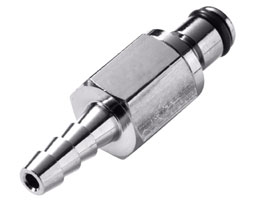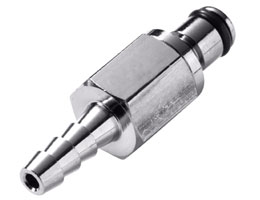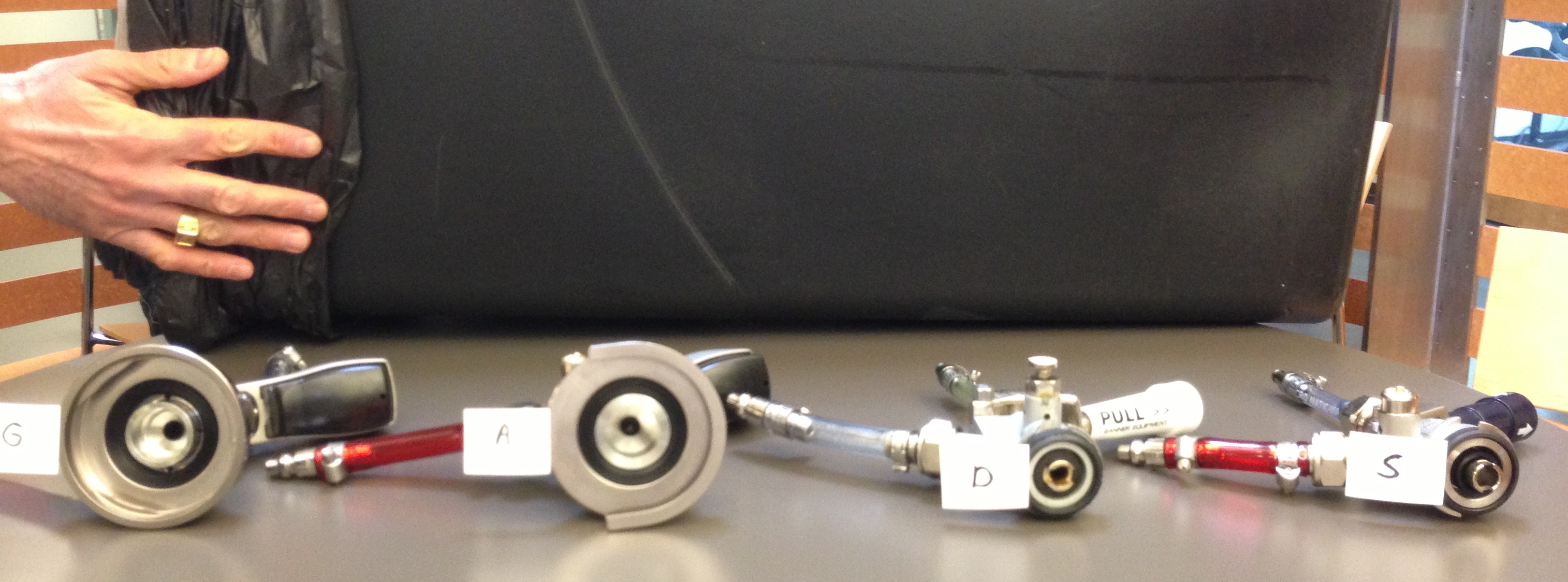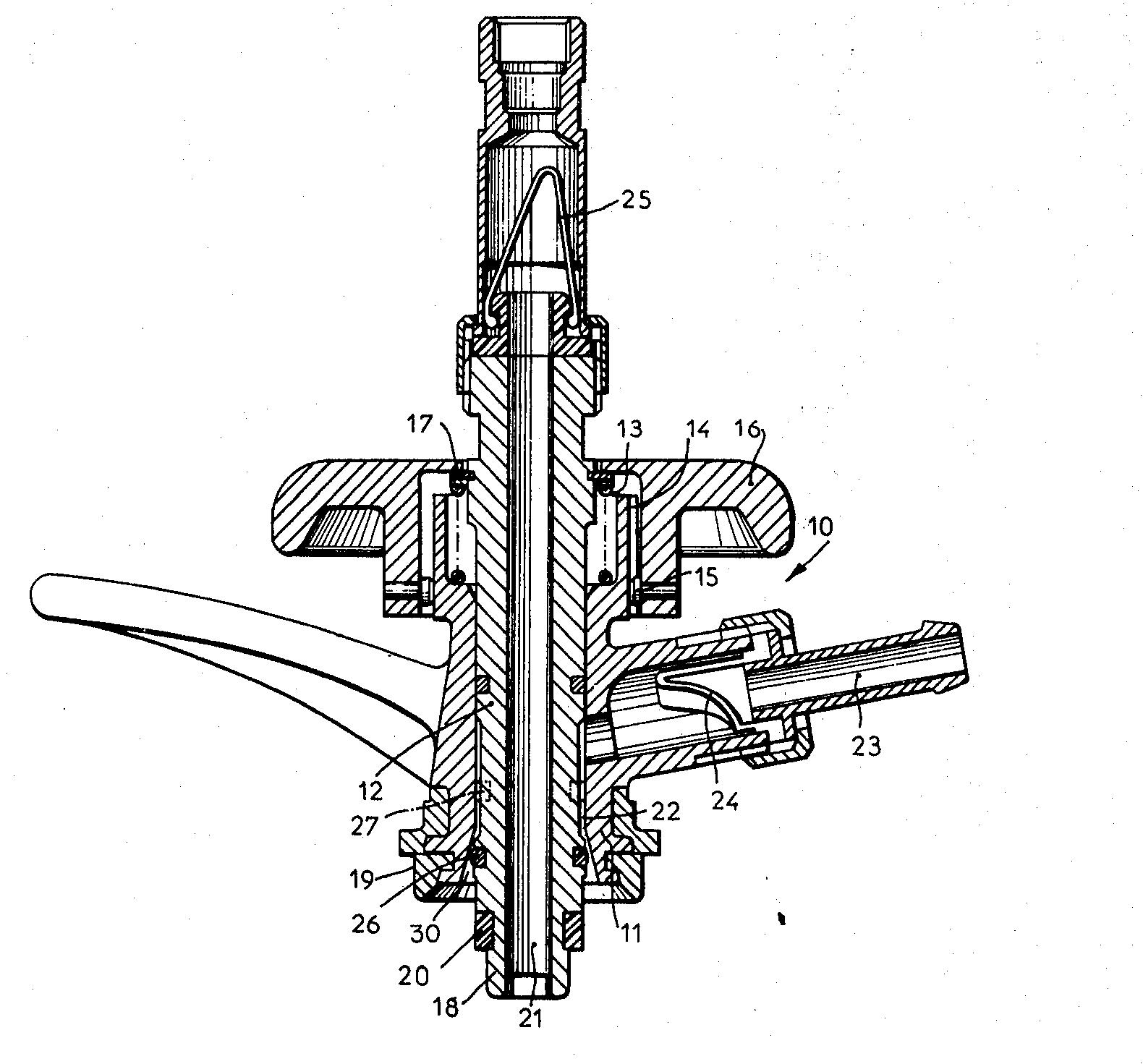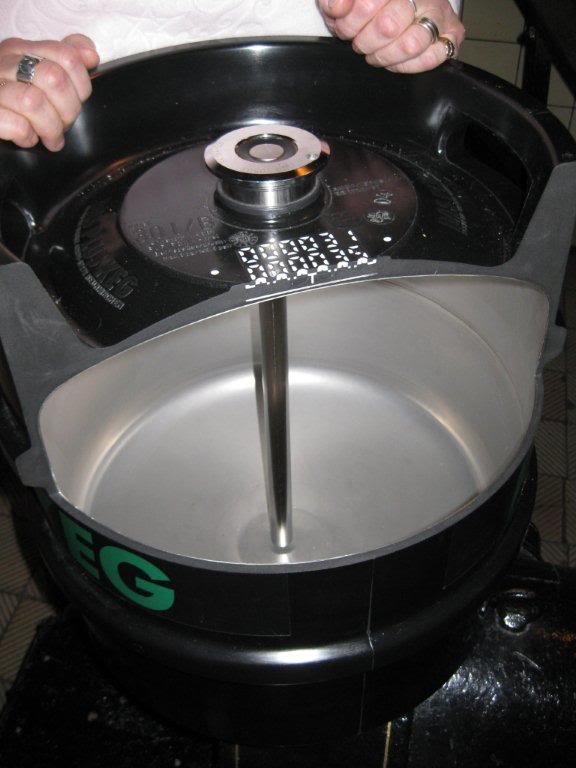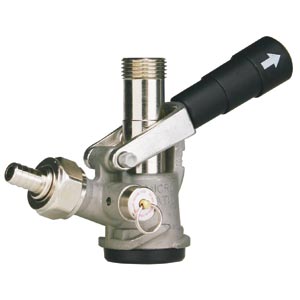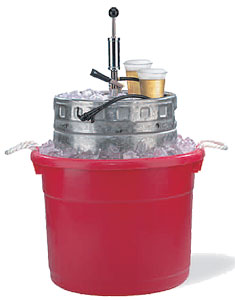Robin and Shahin, still basking in the glory of our Eurobeer experiment with the S-system keg coupler, opted to forge ahead with our beer diversification initiative for Venture Café. Our crash course in keg coupler technology has taught us much about the inner workings of beer dispensing systems, knowledge that we feel obligated to share with our fellow beer aficionados. First and foremost, all keg couplers are not created equal.
First unveiled in Operation Keg: Part 1, this project has encountered only one minor hiccup to date. Deceived by an incorrect photo on a vendor website, we mistakenly ordered plug connectors for the beer lines with retractable white plastic stoppers (top photo) that restricted flow more than we might have liked.
Last Thursday during the Café, we replaced the errant connectors on the S- and D-system couplers with unvalved plug connectors (bottom photo). Problem solved!
During lunch hour on Friday, following the fortuitous arrival of two additional 5/16” plug connectors for the gas lines, we outfitted our brand-new G-system and A-system couplers with their very own quick-release valves, allowing them to join the august company of the previously retrofitted D- and S-system couplers. (Micromatic, the fine purveyor of the Venture Café’s keg couplers, maintains a reasonably comprehensive list of beer brands with corresponding keg taps.)
The A-coupler, aptly nicknamed the “German Slider,” engages the beer line by sliding sideways onto the keg. German breweries Warsteiner, Hacker-Pschorr, Paulaner, and Spaten, among others, distribute their wares A-compatible kegs. Well-known brews from the UK such as Boddingtons, Fuller’s, and Tennent’s use the G-system, as well as the Dutch brand Grolsch. Anchor Brewing Company in San Francisco made a name for itself in the 1980s as a contrarian by adopting the G-system instead of the D-coupler used by the vast majority of American beermakers. In recent years, Anchor has caved to peer pressure somewhat. Although they still distribute ½ and full barrel kegs with G-system connections, 1/6 kegs of Anchor beer are D-coupler compatible.
As shown in the photo above (along with Shahin’s hand), the G-coupler, named after the UK manufacturer Grundy, has an O-ring configuration similar to that on the German Slider, but the beer line is engaged by twisting onto the fitting at the top of the keg. At first glance, the beer inlets of the D- and S-couplers also look quite similar. However, because the probe on the S-coupler is longer and narrower than its counterpart on the D-coupler, they cannot be substituted for one another. D- and S-couplers are sometimes referred to as American and European Sankey couplers, respectively.
Who exactly was this Sankey character? An inquiring mind wanted to know. Naturally, I turned to that formidable fount of fantastic factoids otherwise known as Google. As it happens, Sankey refers to GKN Sankey Ltd. (now GKN plc). GKN (formerly Guest, Keen and Nettlefolds), a multinational producer of components for the automotive and aerospace industries headquartered in Worcestershire, England, has a storied history. The company evolved from an ironworks founded in 1759 during the early stages of the Industrial Revolution. The Sankey in question was Joseph Sankey (1826-1886), a producer of steel tea trays whose company, Joseph Sankey and Sons Ltd., began manufacturing auto bodies and steel wheels in the early 20th century. Sankey & Sons was acquired by GKN in 1920. The combined entity continued to diversify, entering the airplane engine turbine blade market in the 1950s. In January 1977, the U.S. Patent and Trademark Office issued Patent #4,002,273, entitled “Dispense Head for Liquid Containers” to Cyril Golding and Eugene Leonowicz, assigned to GKN Sankey Ltd. of Telford, England. Figure 1 looks familiar:
Unfortunately, the Sankey brewery products business did not survive the manufacturing downturn in the UK during the 1980s, but the Sankey name (often misspelled as “Sanke” on beer websites) lives on.
Reading through the Sankey patent confirmed that all of the various and sundry keg couplers designs serve a common purpose– dispensing sanitary, good-tasting beer with just the right amount of carbonation. Modern beer kegs are equipped with a spear, a long metal tube that extends inside the keg down the middle from the ball valve at the top of the vessel, terminating at an open inlet near the bottom. The spear facilitates the uniform dispensing of beer at all liquid levels.
Pulling the handle down and pushing it into the groove in the side of the coupler opens the CO2 valve. When connected to a gas canister but not to a keg, seating the handle causes CO2 to rush out around the rubber O-ring at the bottom of the device. The act of mating the coupler to the keg by twisting clockwise (or sliding in the case of the A-coupler) pushes down on the ball valve at the top of the spear. Beer flows upwards through the top of the coupler to the tap.
The engaged coupler forms a seal such that CO2 from the gas line cannot enter directly into the beer line. The gas, typically pressurized at 12-14 PSI, increases the pressure inside the keg, forcing beer up the spear and out the top of the coupler towards to the tap. As the keg empties, the CO2 forced into the keg through the gas line on the side of the coupler occupies the resulting empty space in the keg. Every couple of weeks, the CO2 tank in our kegerator runs out of gas and requires replacement. Although some of the CO2 dispensed from the gas canister in the kegerator ends up dissolving in the beer, CO2 also occurs naturally in beer as a byproduct of the fermentation process. Thus, the head of foam at the top of a glass of freshly-poured beer has both natural and artificial components.
You may (or may not) recall that kegs of mass-produced American swill in frat house bathrooms have keg taps equipped with hand pumps. These decidedly low-brow beer dispensing systems introduce air into the keg, contaminating the beer and accelerating spoilage. Quality counts at Venture Café! Our craft beer selections remain unsullied by the surrounding environment until Amy, Greg, or Robin artfully pour them into squeaky clean, compostable Vegware cups. Stop by this Thursday from 3-8 pm to enjoy a cold beer, brought to you by Venture Café’s impressive collection of keg couplers.


